
The Worshipful Company of Clockmakers was established under a royal charter granted by King Charles I in 1631. It ranks sixty-first among the livery companies of the City of London, and comes under the jurisdiction of the Privy Council. The company established a library and its museum in 1813, which is the oldest specific collection of clocks and watches worldwide. This is administered by the company's affiliated charity, the Clockmakers' Charity, and is presently housed on the second floor of London's Science Museum. The modern aims of the company and its museum are charitable and educational, in particular to promote and preserve clockmaking and watchmaking, which as of 2019 were added to the HCA Red List of Endangered Crafts.

A clockmaker is an artisan who makes and/or repairs clocks. Since almost all clocks are now factory-made, most modern clockmakers only repair clocks. Modern clockmakers may be employed by jewellers, antique shops, and places devoted strictly to repairing clocks and watches. Clockmakers must be able to read blueprints and instructions for numerous types of clocks and time pieces that vary from antique clocks to modern time pieces in order to fix and make clocks or watches. The trade requires fine motor coordination as clockmakers must frequently work on devices with small gears and fine machinery.
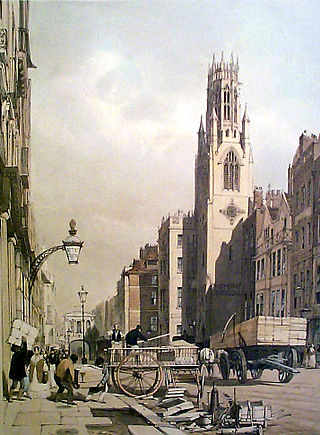
The Guild Church of St Dunstan-in-the-West is in Fleet Street in the City of London. It is dedicated to Dunstan, Bishop of London and Archbishop of Canterbury. The church is of medieval origin, although the present building, with an octagonal nave, was constructed in the 1830s to the designs of John Shaw.
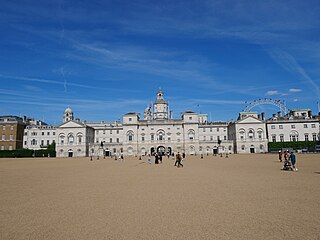
Horse Guards is a historic building in the City of Westminster, London, between Whitehall and Horse Guards Parade. It was built in the mid-18th century, replacing an earlier building, as a barracks and stables for the Household Cavalry. The current and previous buildings were, between the early 18th century and 1858, the main military headquarters for the British Empire. Horse Guards originally formed the entrance to the Palace of Whitehall and later St James's Palace; for that reason it is still ceremonially defended by the King's Life Guard.
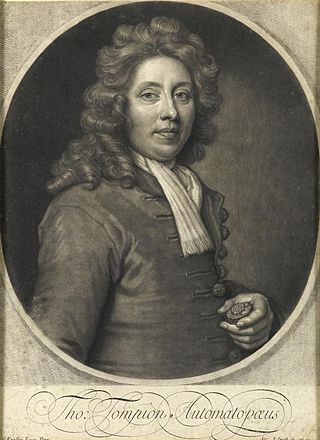
Thomas Tompion, FRS (1639–1713) was an English clockmaker, watchmaker and mechanician who is still regarded to this day as the "Father of English Clockmaking". Tompion's work includes some of the most historic and important clocks and watches in the world, and can command very high prices whenever outstanding examples appear at auction. A plaque commemorates the house he shared on Fleet Street in London with his equally famous pupil and successor George Graham.
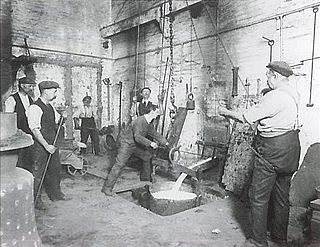
Gillett & Johnston was a clockmaker and bell foundry based in Croydon, England from 1844 until 1957. Between 1844 and 1950, over 14,000 tower clocks were made at the works. The company's most successful and prominent period of activity as a bellfounder was in the 1920s and 1930s, when it was responsible for supplying many important bells and carillons for sites across Britain and around the world.
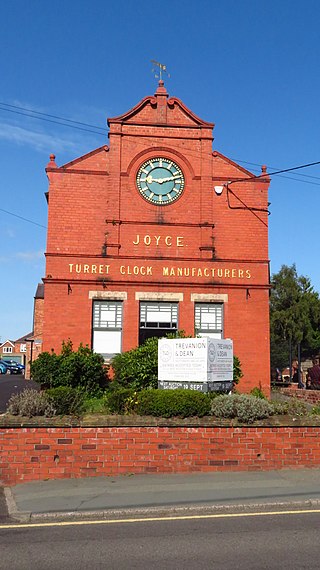
J. B. Joyce & Co, clockmakers, were founded in Shropshire in England. The company claim to be the oldest clock manufacturer in the world, originally established in 1690, and have been part of the Smith of Derby Group since 1965. The claim is challenged by another English firm of clockmakers, Thwaites & Reed, who claim to have been in continuous manufacture since before 1740, with antecedents to 1610.
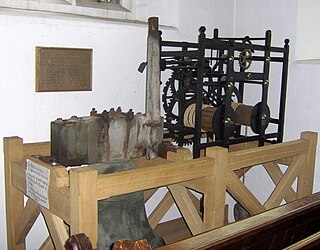
The Bilbie family were bell founders and clockmakers based initially in Chew Stoke, Somerset and later at Cullompton, Devon in south-west England from the late 17th century to the early 19th century.

Benjamin Lewis Vulliamy was a clockmaker, active in 18th and 19th century Britain. He succeeded his father Benjamin Vulliamy as head of the firm and Clockmaker to the Crown.
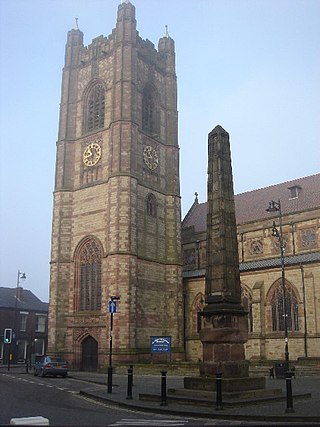
St John the Baptist's Church is in Market Place, Atherton, Greater Manchester, England. It is an active Anglican parish church in the archdeaconry of Salford, and diocese of Manchester. Together with St George's and St Philip's Churches in Atherton and St Michael and All Angels at Howe Bridge, the church is part of the United Benefice of Atherton and Hindsford with Howe Bridge. It is recorded in the National Heritage List for England as a designated Grade II listed building.
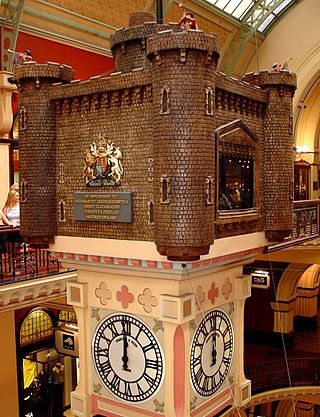
The "Royal Clock" is located on the upper level of the southern half of the Queen Victoria Building in Sydney, Australia. It was designed by Neil Glasser and made by Thwaites & Reed of Hastings in England, and when activated, displays scenes of English royalty. The plaque on the side of the clock reads "By appointment to Her Majesty Queen Elizabeth II. Turret Clockmakers Thwaites & Reed Ltd Hastings England".
Smith of Derby Group is a clockmaker based in Derby, England founded in 1856. Smith of Derby has been operated continuously under five generations of the Smith family.
John Knibb (1650–1722) was an English clockmaker born in Claydon, Oxfordshire. He produced various clocks and watches including bracket clocks, lantern clocks, longcase clocks, and some wall-clocks, as well as building and maintaining several turret clocks. Even though his main market was catering to customers of modest means, he also dominated the higher-quality sector. Only six of Knibb's watches are known to survive.
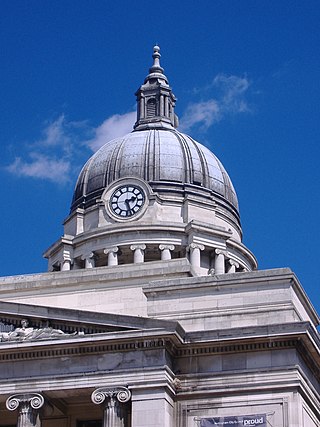
G. & F. Cope Ltd was a clockmaking company based in Nottingham, England from 1845 to 1984.

Reuben Bosworth was a watch and clockmaker in Nottingham.

St Giles’ Church, Ollerton is a Grade II listed parish church in the Church of England in Ollerton, Nottinghamshire, England.
James Ritchie & Son are a firm of Clockmakers in Broxburn, West Lothian, Scotland. The company was established in 1809 and is Scotland's oldest turret clock manufacturer.
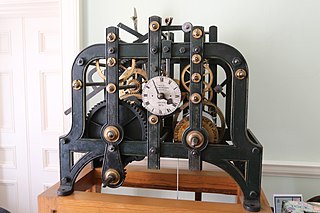
John Moore & Sons of Clerkenwell was a London-based clockmaker. For most of its history the firm's factory and main office was at 38-39 Clerkenwell Close, described in the 1850s as being 'situated in the very heart of the London watch and clock trade'.





















